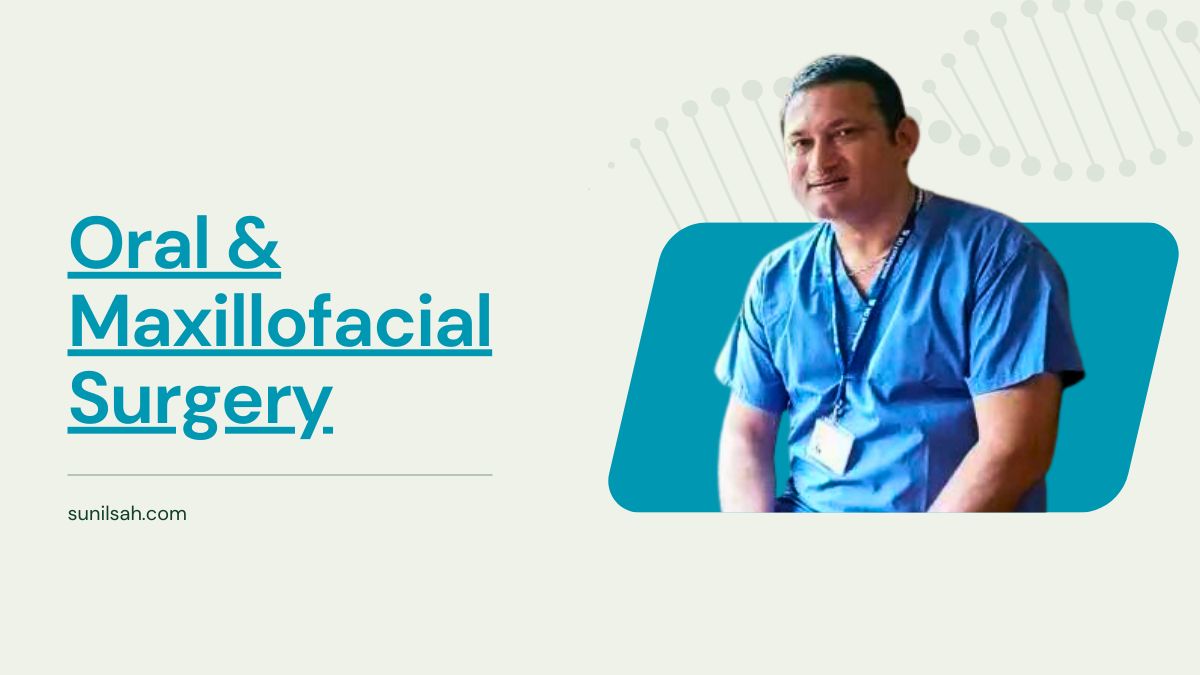Modern surgery has advanced to the point that the volume of information and technical abilities necessary has led to surgeons specialising in specific fields, often anatomical regions of the body, though occasionally a method or patient type.
Oral and maxillofacial surgery is a recognised worldwide speciality that falls under medical directives in Europe. It is unusual in that it calls for a dual degree in medicine and dentistry, followed by extensive general and specialised surgical training. The majority of surgeons complete their education in dentistry before beginning their medical studies, although it is increasingly typical for people who get a medical degree to go on to complete their dental education before pursuing a career in OMFS.
What are the responsibilities of oral and maxillofacial surgeons?
Oral and maxillofacial surgery is the surgical speciality dealing with diagnosing and treating illnesses affecting the mouth, jaws, face, and neck. It is sometimes referred to as the link between medicine and dentistry.
Among the many conditions covered by this speciality are facial injuries, head and neck cancer, salivary gland diseases, disproportion, pain in the face, impacted teeth, cysts and tumours of the jaws, as well as a wide range of conditions related to the oral mucosa, such as mouth ulcers and infections.

Oral and maxillofacial surgery subspecialties
Oral and Maxillofacial Surgeons may choose to train and specialize in the following areas:
- Oral & Maxillofacial – encompasses the surgical treatment of dental problems (such as implants), jaw problems, temporomandibular joint problems, and lesions of the face.
- The surgical treatment of head & neck cancer – surgery to remove the tumours followed by reconstruction, including microvascular free tissue transfer.
- Craniofacial Trauma – the treatment of injuries involving the soft and hard tissues of the skull and face.
- Cosmetic surgery – a procedure used to improve the appearance and quality of life of a person’s face.
- Correction of Craniofacial Facial Deformities – can be performed primarily to improve orofacial function, but can also be performed to overcome disfigurement and improve quality of life.
- Oral Medicine – involves diagnosing and treating conditions affecting the oral cavity and facial region.
An overview of the main operations
Numerous oral and maxillofacial surgical procedures are performed on an outpatient basis while the patient is sedated or under local anaesthetic. A list of these procedures includes intraoral and soft tissue surgeries on the face and mouth, the placement of dental and facial implants before implant surgery, and the removal of impacted teeth. Under general anaesthesia, more complex procedures, such as those relating to cancer, trauma, deformities of the face, or disorders of the salivary glands, are conducted.
- Surgical preparation for implant placement, including the use of implants to retain facial or dental prostheses, in conjunction with bone grafting techniques to reconstruct the face and mouth.
- Surgical treatment of head and neck cancer, including access to tumours within the depths of complex craniofacial anatomy, ablation of tumours, and dissection of the neck.
- Injuries to the face, neck, and teeth, as well as management of complex craniofacial fractures.
- Surgery for the reconstruction of tissues, including microvascular free tissue transfers.
- Surgical correction of cleft lip and palate and other congenital facial deformities.
- Surgery for cosmetic purposes, such as facelifts, eyelid surgery, and rhinoplasty.
- Reconstruction of the face after the removal of complex facial skin tumours
- Diagnosis and treatment of benign and malignant salivary gland lesions.
- Removal of complex dental roots buried in the ground as well as impacted teeth.
- Correction of facial disproportion by orthognathic surgery
- Surgical treatment of the temporomandibular joint
- Removing cysts and tumours from the jaws
Considering the nature of their work, oral and maxillofacial surgeons frequently collaborate with doctors in other fields, including ENT specialists, clinical oncologists, plastic surgeons, orthodontists, restorative dentists, radiologists, and neurosurgeons.
Oral and maxillofacial surgery: the latest developments
Surgeons can view accurate and detailed three-dimensional images of head and neck anatomy using three-dimensional radiographic anatomical displays (CT scans) and magnetic resonance imaging (MRI scans). It is possible to manipulate images by computer to generate precise models for planning surgery. The use of navigation systems that are linked to complex images allows the surgeon to view a “head-up display” in the operating room that is being tested.
Finally, hope you liked the blog on Oral & Maxillofacial Surgery. Please visit my website to learn more about me. Also, check out Craniofacial Center Nepal.
